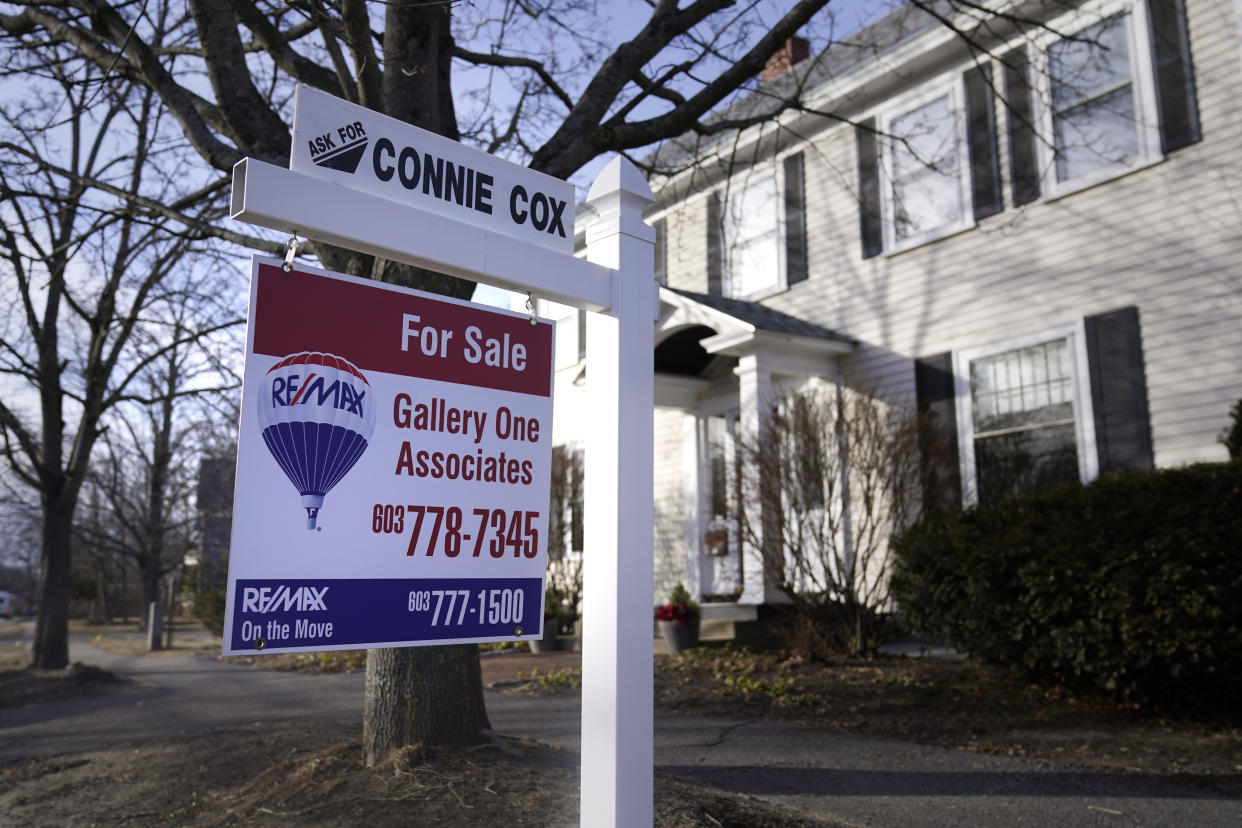Goldman Sachs: U.S. homebuyers likely see 'modest' impacts from bank crisis
If higher mortgage rates and tighter lending standards weren't the dagger for prospective U.S. homebuyers, then recent bank failures would seem to have added new obstacles to closing deals.
But according to strategists at Goldman Sachs, the impacts in the residential housing markets from these events are likely be "modest" for potential homebuyers.
“To be clear, tighter lending standards will weigh on the residential mortgage sector,” chief credit strategist Lotfi Karoui wrote in a note to clients this week.
"But the net impact will likely be more modest than for other segments such as small business and commercial real estate loans."
Among the factors buttressing the residential market from the crisis' worst impacts is that mortgage lending is less sensitive to bank balance sheet pressures compared to other forms of lending.
Only 18% of mortgages sit whole on bank balance sheets, while nearly 70% of outstanding mortgages are stripped of credit risk and securitized into the mortgage-backed securities (MBS) market where these mortgages are held and traded by investors, Goldman noted.
Additionally, roughly two-thirds (64%) of first-lien mortgage origination volume comes from non-banks, according to data from the Federal Financial Institutions Examination Council cited by Goldman Sachs. Goldman notes lending standards in the residential housing market had already tightened before the recent bank crisis, suggesting broad impacts in credit conditions would likely be more muted in this pocket of the market.
Buyers have also seen something of a reprieve from rates this year, with the average 30-year fixed-rate mortgage sliding to 6.28% from 6.32% the prior week, according to the latest data from Freddie Mac out Thursday. Rates have dropped for four consecutive weeks and are down from nearly 7% in the final weeks of 2022.
But rates still present a challenge for homebuyers who aren't seeing the full benefits of a decline in Treasury yields as investors price in more modest rate increases from the Federal Reserve.
Goldman notes that the gap between the 30 year-fixed mortgage rate and their closest proxy, the 10-year Treasury yield, has widened in recent weeks.
Goldman said there are two main factors driving this spread — demand for higher margins from lenders and poor performance in the mortgage-backed securities market.
Silicon Valley Bank, for instance, held about $65 billion in mortgage-backed securities on its balance sheet at the end of 2022 and was sitting on unrealized losses of $887 million from these holdings. Data from Goldman shows roughly 97% of outstanding mortgages have interest rates below the current average 30-year rate.

The investment bank expects lenders to remain selective and rates to be volatile in the short-term, resulting in a continued wide gap between mortgage rates and Treasuries.
Meanwhile, the spring selling season has arrived in the U.S. housing market but a resulting surge in demand has not yet been seen.
Mortgage application volume dipped for the week ended March 31, according to data from the Mortgage Bankers Association (MBA) Weekly Mortgage Applications Survey. The slide followed four consecutive weeks of gains.

And though affordability measures have improved somewhat, the cost of buying remains prohibitive relative to conditions that prevailed just two years ago, Goldman Sachs data shows.
Going forward, the firm also expects metro-level readings on prices to be more instructive than national indicators.
"[The] metropolitan areas that have seen more resilience through the housing market downturn also have very tight inventory levels, with only a modest improvement over the past year," Goldman wrote.
"Additionally, housing affordability has been a key determinant of regional home price variance; even with falling Treasury yields, affordability levels in underperforming markets remain very poor."

Dani Romero is a reporter for Yahoo Finance. Follow her on Twitter @daniromerotv
Click here for the latest stock market news and in-depth analysis, including events that move stocks
Read the latest financial and business news from Yahoo Finance
